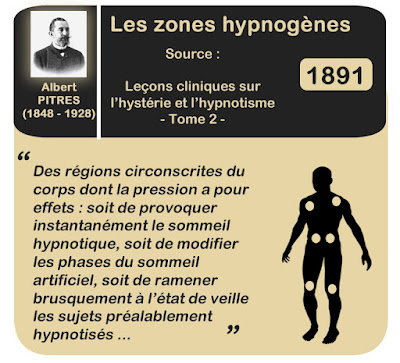De la passivité hypnotique à l'activité
On dit souvent que pendant l'hypnose, le patient est censé fonctionner passivement, comme s'il était un robot, manœuvré par les suggestions de l'hypnotiseur. Cela milite contre un cadre thérapeutique approprié. Une telle objection serait valable si le patient était obligé de maintenir le statut paralysé que l’on obtient dans les procédures hypnotiques orthodoxes.
L'hypnoanalyse, au contraire, implique une activité considérable de la part du patient.Une innovation importante en thérapie est la procédure consistant à travailler avec le patient pendant la transe pour l’éveiller à la vigilance et à la productivité. De cette façon, il se débarrasse de la léthargie et des attitudes cataleptiques traditionnellement acceptées comme un inévitable concomitant de la transe. On ne s'attend pas à ce qu'il fonctionne comme une marionnette. Les fonctions cognitives, affectives et motrices sont stimulées. Le patient se déplace librement et participe activement au travail analytique. Il est encouragé à penser de manière spontanée et facile, à accepter ou à rejeter les interprétations de l'analyste ou la validité du matériel qu'il présente.
Le changement de technique remplaçant la passivité hypnotique par l’activité a probablement un effet important sur l'image de base de l’autorité comme restrictive, répressive et insistant pour avoir raison en tout temps. Cela ouvre la voie à l'expression de soi. En effet, l'analyse devient une expérience extrêmement dramatique. L'intellectualisation de celle-ci est minimisée.
------ Texte original ----------
During hypnosis, it may be argued, the patient is expected to function passively, as if he were a robot, to be maneuvered about by suggestions from the hypnotist. This militates against a proper therapeutic setting.
Such an objection would be valid were the patient obliged to maintain the paralyzed status that obtains in the orthodox hypnotic procedure. Hypnoanalysis, on the contrary, implies tremendous activity on the part of the patient.
An important innovation in therapy is the procedure of working with the patient during the trance to arouse him to alertness and productivity. In this way he rids himself of the lethargy and cataleptic attitudes traditionally accepted as an inevitable concomitant of the trance. He is not expected to function like a puppet. Cognitive, affective and motor functions are stimulated. The patient moves about freely and participates actively in the analytic work. He is encouraged to think in a spontaneous and facile way, to accept or reject the analyst's interpretations or the validity of the material that he brings up.
The change in technic replacing hypnotic passivity by activity probably has an important effect with respect to the basic image of authority as restrictive, repressive, and insistent upon being right at all times. It opens the way to self-expressiveness. Indeed, the analysis becomes an intensely dramatic experience. Intellectualization of it is minimized.






